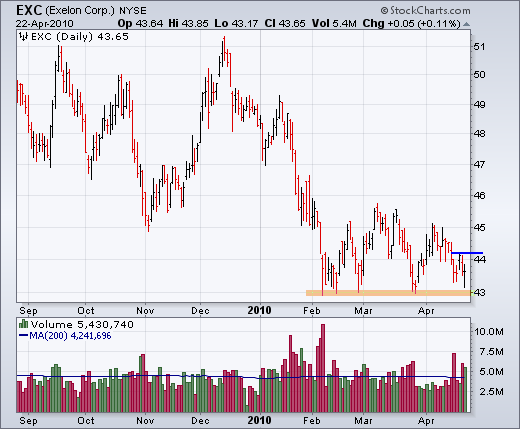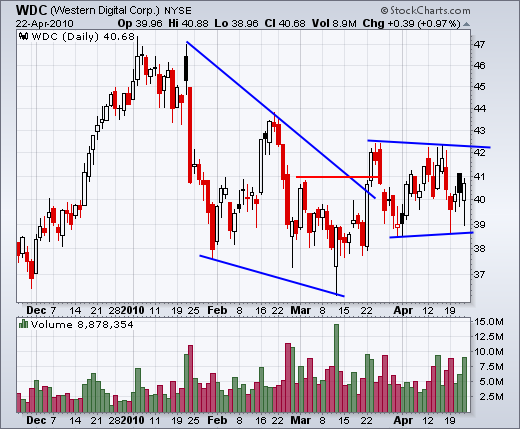After a gap down and weak open, the S&P 500 ETF (SPY) firmed throughout the morning and then surged in the late afternoon to close positive. Once again, the bulls remain resilient as even the smallest dips bring out the buyers. The consumer discretionary sector and small-caps led the charge. On the daily chart, SPY dipped below the Raff Regression Channel extension in the morning, but surged back above to remain within the channel. The ETF remains overbought after a 15% advance from the February low (a mere 11 weeks ago). Nevertheless, support levels and the uptrend continue to hold.
On the 30-minute chart, SPY is tracing out a triangle over the last few days. With a higher low at 119, I can raise short-term support to this level. A break below 119 would reverse the short-term uptrend and project further weakness towards the next support zone around 117. Technically, a break above Wednesday's high would be bullish and signal a continuation higher. QQQQ and IWM broke above Wednesday's high yesterday. Also note that the range over the last five trading days has gotten rather wide and volatile. The old Wall Street adage is "never short a dull market". We can turn this around to imply "careful going long a volatile market", especially one that is overbought.

Economic reports:
Fri - Apr 23 - 08:30AM - Durable Orders
Fri - Apr 23 - 10:00AM - New Home Sales
Charts of interest: EXC, WDC


This commentary and charts-of-interest are designed to stimulate thinking. This analysis is not a recommendation to buy, sell, hold or sell short any security (stock ETF or otherwise). We all need to think for ourselves when it comes to trading our own accounts. First, it is the only way to really learn. Second, we are the only ones responsible for our decisions. Think of these charts as food for further analysis. Before making a trade, it is important to have a plan. Plan the trade and trade the plan. Among other things, this includes setting a trigger level, a target area and a stop-loss level. It is also important to plan for three possible price movements: advance, decline or sideways. Have a plan for all three scenarios BEFORE making the trade. Consider possible holding times. And finally, look at overall market conditions and sector/industry performance.

Economic reports:
Fri - Apr 23 - 08:30AM - Durable Orders
Fri - Apr 23 - 10:00AM - New Home Sales
Charts of interest: EXC, WDC


This commentary and charts-of-interest are designed to stimulate thinking. This analysis is not a recommendation to buy, sell, hold or sell short any security (stock ETF or otherwise). We all need to think for ourselves when it comes to trading our own accounts. First, it is the only way to really learn. Second, we are the only ones responsible for our decisions. Think of these charts as food for further analysis. Before making a trade, it is important to have a plan. Plan the trade and trade the plan. Among other things, this includes setting a trigger level, a target area and a stop-loss level. It is also important to plan for three possible price movements: advance, decline or sideways. Have a plan for all three scenarios BEFORE making the trade. Consider possible holding times. And finally, look at overall market conditions and sector/industry performance.

About the author:
Arthur Hill, CMT, is the Chief Technical Strategist at TrendInvestorPro.com. Focusing predominantly on US equities and ETFs, his systematic approach of identifying trend, finding signals within the trend, and setting key price levels has made him an esteemed market technician. Arthur has written articles for numerous financial publications including Barrons and Stocks & Commodities Magazine. In addition to his Chartered Market Technician (CMT) designation, he holds an MBA from the Cass Business School at City University in London.
Learn More
